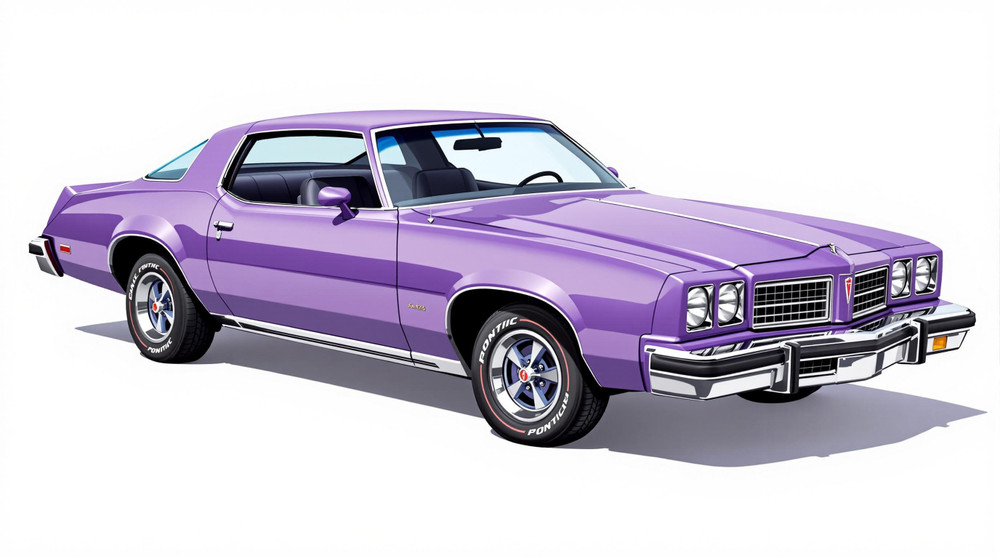Image of 1975 Pontiac Astre, Note: These illustrations use artistic license and may differ from actual historical models.
Performance Metrics
Fundamental Metrics
Emotional Appeal
MMP Rating
| Engine Specifications | |
|---|---|
| Engine Options: | 2.3L 4-cylinder engine |
| Displacement Range: | 140 cu in (2.3 L) |
| Horsepower Range: | 75-90 hp |
| Torque: | 120 lb-ft |
| Compression Ratio: | 8.0:1 |
| Ignition System: | Electronic ignition system |
| Cooling System: | Liquid-cooled |
| Performance Specifications | |
| 0-60 Time: | 14-16 seconds |
| 1/4 Mile Time: | 18-20 seconds |
| Top Speed: | 100 mph |
| Transmission and Drive | |
| Drive Type: | Rear-wheel drive |
| Transmission Type: | 3-speed automatic or 4-speed manual |
| Fuel and Efficiency | |
| Fuel System Type: | Carburetor |
| MPG: | 20-25 mpg |
| Dimensions and Brakes | |
| Brakes: | Front disc and rear drum brakes |
| Wheelbase: | 97.0 in |
| Weight: | 2,500 lbs |
Note: Specifications for classic cars are given to the best of our ability, considering the limited and variant data available.
Unveiling the Underdog: The 1975 Pontiac Astre
The 1975 Pontiac Astre may not have been the poster child of the muscle car era, but it certainly carved its niche in automotive history. Born from the stables of General Motors, the Astre was Pontiac's answer to the fuel crisis of the 1970s, offering a more economical alternative to its gas-guzzling brethren. As a variant of the Chevrolet Vega, it shared much of its underpinnings but was distinguished by Pontiac's unique styling cues. A notable moment in its history was when it became one of the first American cars to adopt a four-cylinder engine as a response to shifting consumer demands.
Design and Innovation
The exterior of the 1975 Pontiac Astre sported a compact yet stylish design, with a long hood and short deck that gave it a sporty profile. The interior was modest, with an emphasis on functionality over luxury. Materials used were typical for the era, with durable plastics and vinyls being commonplace. Technologically, it featured innovations like electronic ignition and extensive use of lightweight materials to improve fuel efficiency. Color options ranged from vibrant hues to more subdued tones, with shades like "Firethorn Red" and "Buccaneer Blue" often catching buyers' eyes. The hatchback model was particularly popular for its blend of style and practicality.
Historical Significance
The Astre's introduction marked a shift in American automotive design philosophy, prioritizing fuel efficiency over raw power for the first time in decades. It set a precedent for future vehicles that would focus on smaller engines and lighter constructions to meet new environmental and economic challenges.
Performance and Handling
The 1975 Pontiac Astre's performance was modest by today's standards, with acceleration from 0-60 mph being far from blistering. However, its top speed was adequate for the era's highways. Handling was nimble thanks to its lightweight body and suspension tuning, which allowed it to tackle corners with confidence. Drivers often noted the engine's distinctive hum and the direct feedback from the road that contributed to an engaging driving experience.
Ownership Experience
While not typically seen as a show car or racing vehicle, the Astre served admirably as a daily driver. Its maintenance was straightforward, making it accessible for average owners to keep running without specialized knowledge or tools. However, like many cars of its time, it faced issues such as rust and reliability concerns.
Fun Facts
The Pontiac Astre had its share of quirks; for instance, it shared several parts with other GM models which made for interesting cross-compatibility. While not known for setting records or celebrity ownerships, it did make appearances in period films and TV shows as an emblem of everyday life in the '70s.
Collector's Information
Today, finding a 1975 Pontiac Astre can be quite rare; production numbers were not exceedingly high compared to other models of the time. As a collector's item, its value can vary widely based on condition and originality, ranging anywhere from a few thousand dollars for well-used examples to higher figures for pristine models.
Conclusion
The 1975 Pontiac Astre may not have been at the forefront of performance or luxury during its heyday, but its contribution to automotive history is undeniable. It stands as a testament to an industry at a crossroads and reflects the changing tides of consumer preferences in an era defined by adaptation. For those who appreciate the subtler chapters of automotive evolution, the Astre remains an intriguing piece of Americana worth preserving.
1975 Pontiac Astre Catalog of Parts
 1975 Pontiac Astre Shock Absorber Grommet. 1" bottom O.D., 3/4" high-BN 1Shock Absorber Grommet. 1" bottom O.D., 3/4" high., with 7/16" I.D. Each
1975 Pontiac Astre Shock Absorber Grommet. 1" bottom O.D., 3/4" high-BN 1Shock Absorber Grommet. 1" bottom O.D., 3/4" high., with 7/16" I.D. Each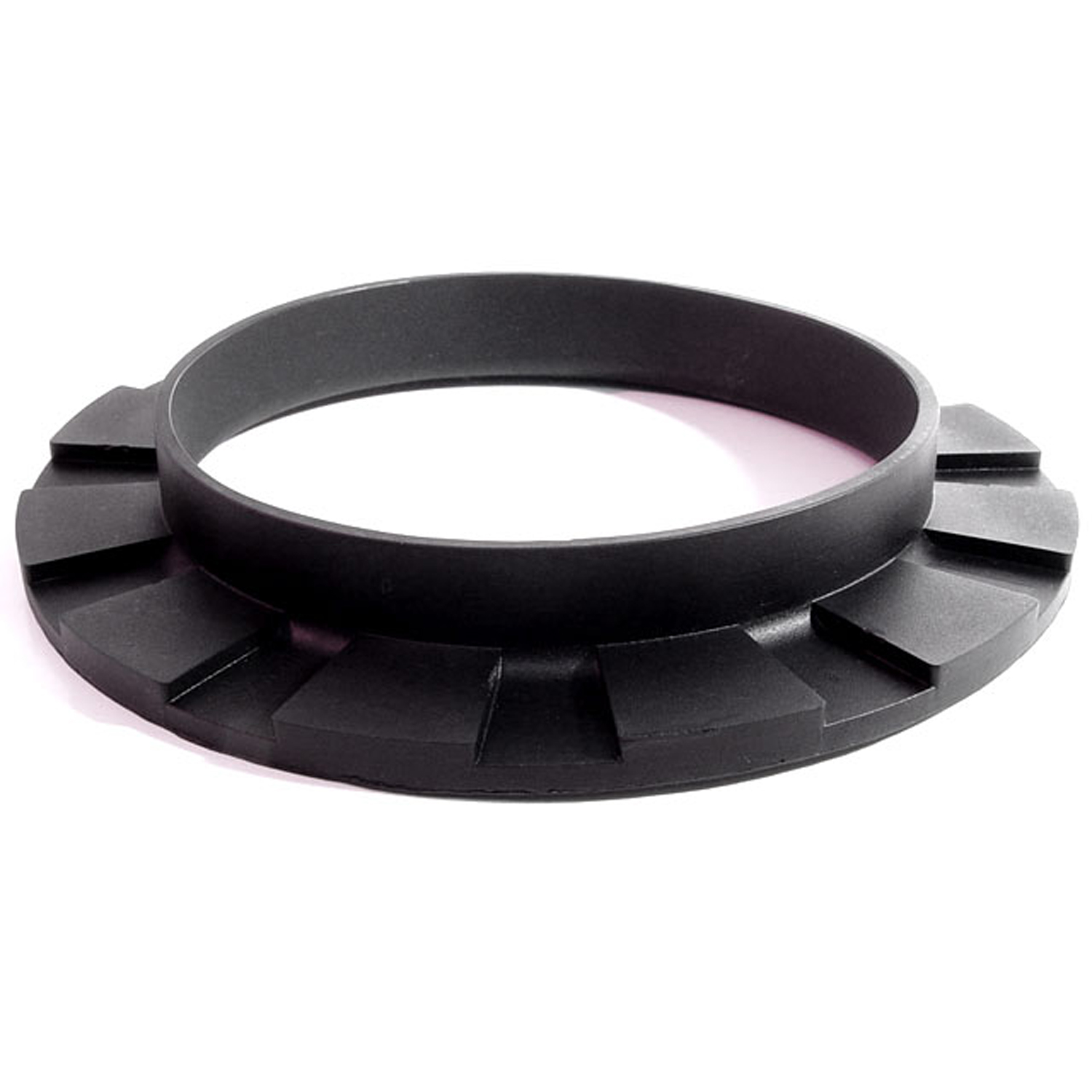 1975 Pontiac Astre Front coil-spring insulator-BN 110Front coil-spring insulator. Fits '41-'60 Oldsmobile and '50-'83 GM passenger models. 5-3/8 in. OD x 3-3/4 in. ID x 3/4 in. high with 13/16 in. wide bottom flange 1/4" thick, 12 flutes. Each.
1975 Pontiac Astre Front coil-spring insulator-BN 110Front coil-spring insulator. Fits '41-'60 Oldsmobile and '50-'83 GM passenger models. 5-3/8 in. OD x 3-3/4 in. ID x 3/4 in. high with 13/16 in. wide bottom flange 1/4" thick, 12 flutes. Each.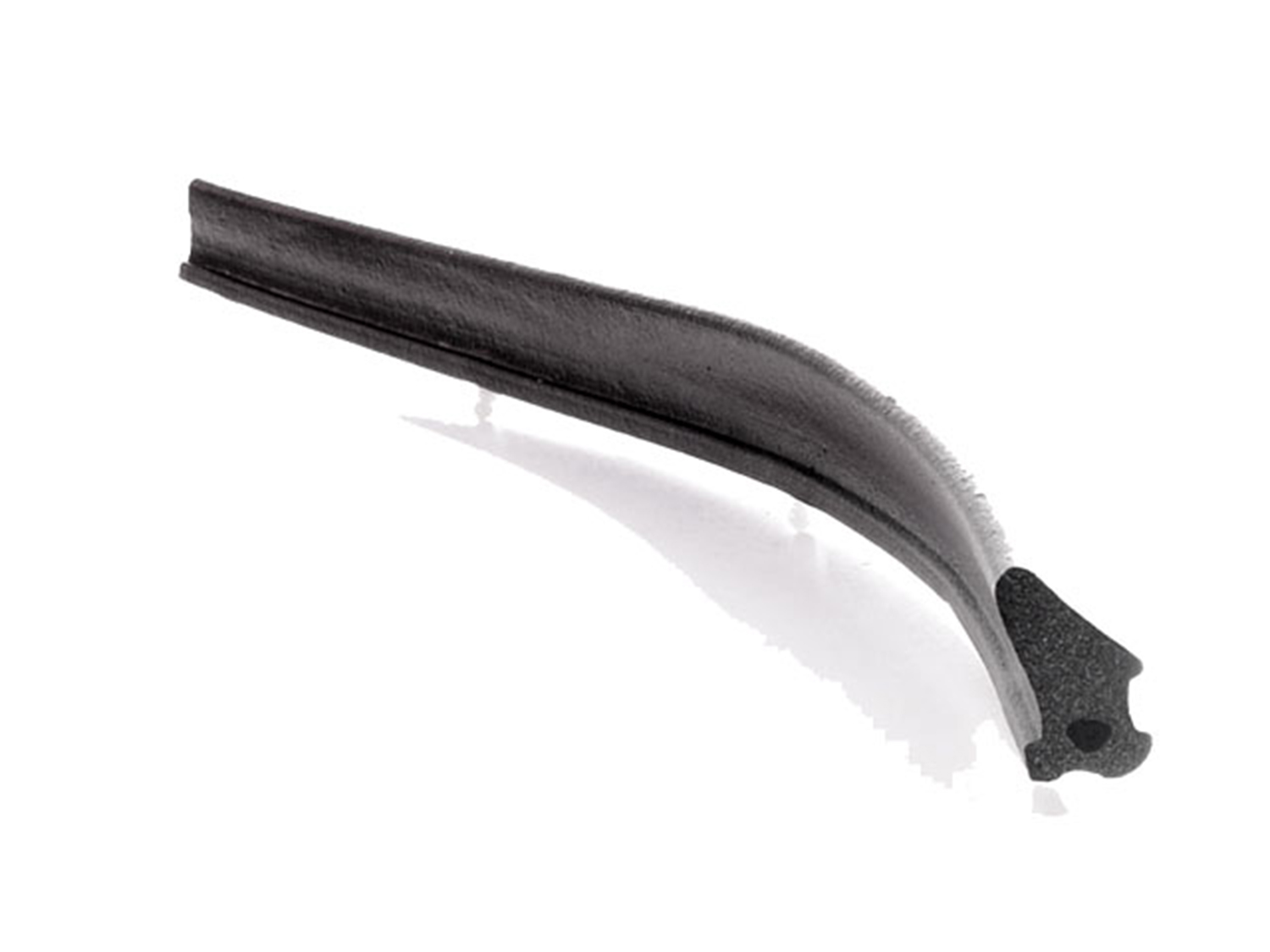 1975 Pontiac Astre Door Side Seal-C/LP 40-KDoor Side Seal. Made of smooth skin sponge extrusion, with clips installed. (For seal without clips, see LP 40-K) Sold by the foot.
1975 Pontiac Astre Door Side Seal-C/LP 40-KDoor Side Seal. Made of smooth skin sponge extrusion, with clips installed. (For seal without clips, see LP 40-K) Sold by the foot.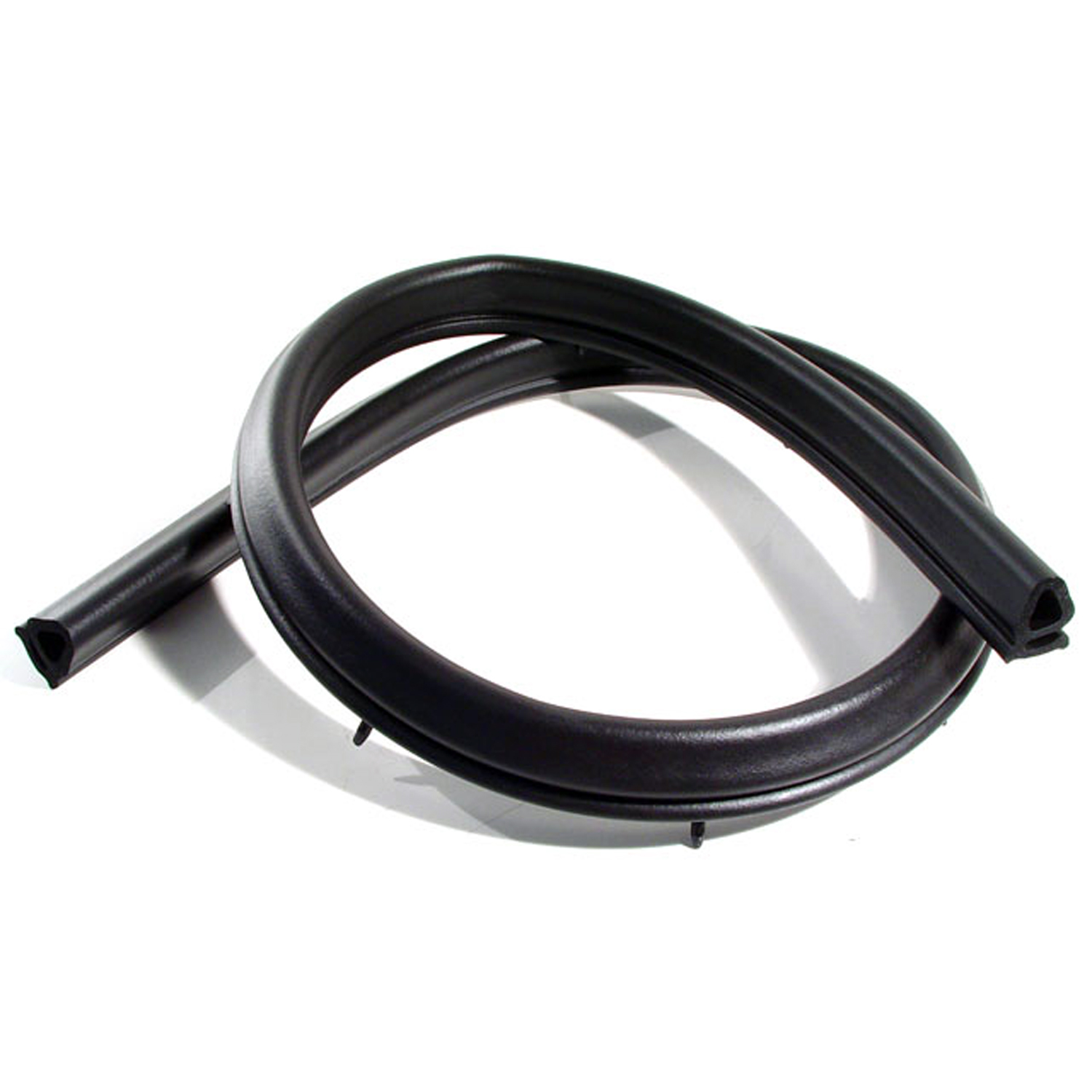 1975 Pontiac Astre Hood to Cowl Seal, 71-80 GM H Body, Each-CS 13-HHood to Cowl Seal, 71-80 GM H Body, Each. Replaces OEM # 9829415. 50" Long. Comes with five mounting clips.
1975 Pontiac Astre Hood to Cowl Seal, 71-80 GM H Body, Each-CS 13-HHood to Cowl Seal, 71-80 GM H Body, Each. Replaces OEM # 9829415. 50" Long. Comes with five mounting clips.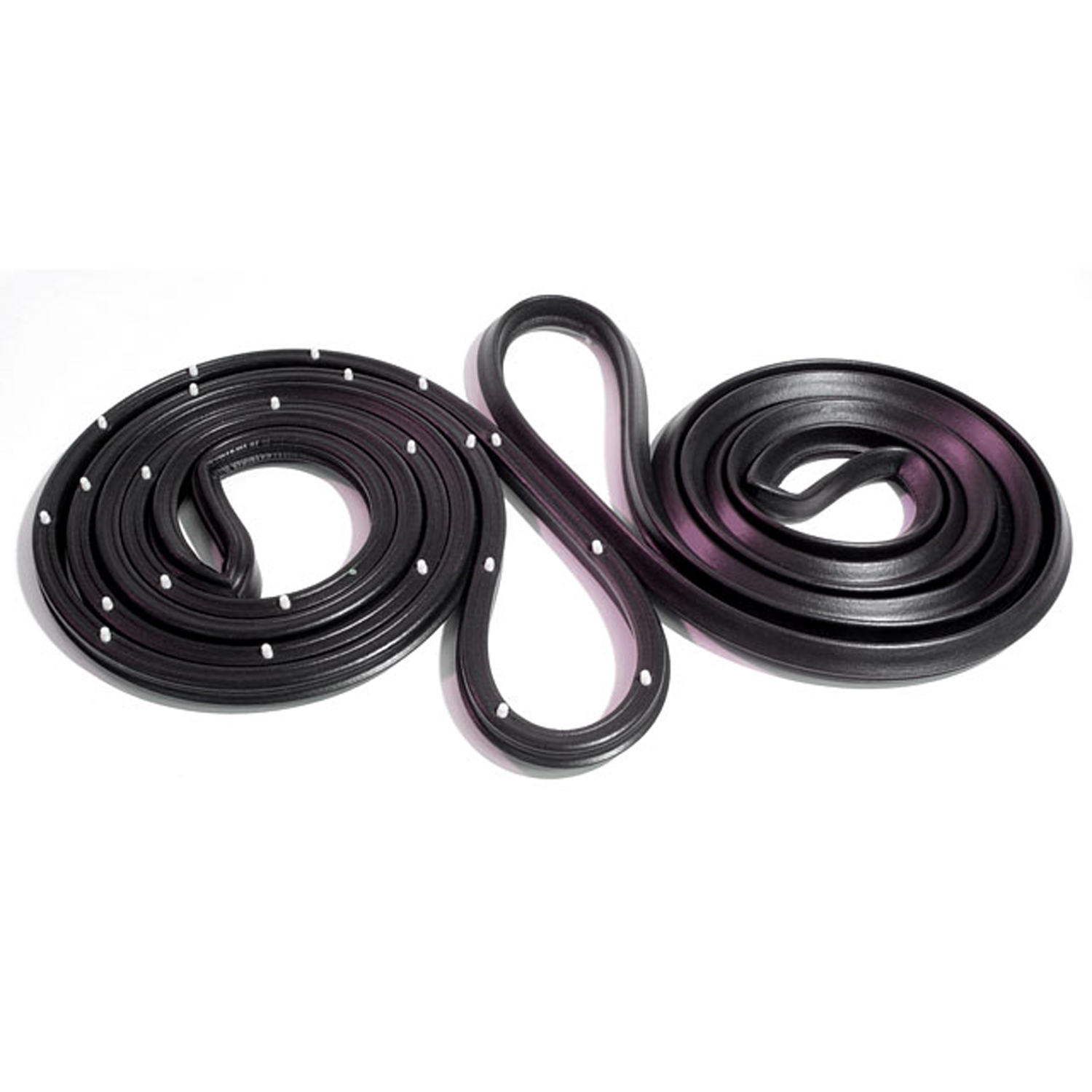 1975 Pontiac Astre Molded Door Seals with Clips-LM 13Molded Door Seals with Clips. For 2-door hatchbacks (does not fit Monza). Replaces OEM #9883773/4. 139-1/2" long. Pair R&L
1975 Pontiac Astre Molded Door Seals with Clips-LM 13Molded Door Seals with Clips. For 2-door hatchbacks (does not fit Monza). Replaces OEM #9883773/4. 139-1/2" long. Pair R&L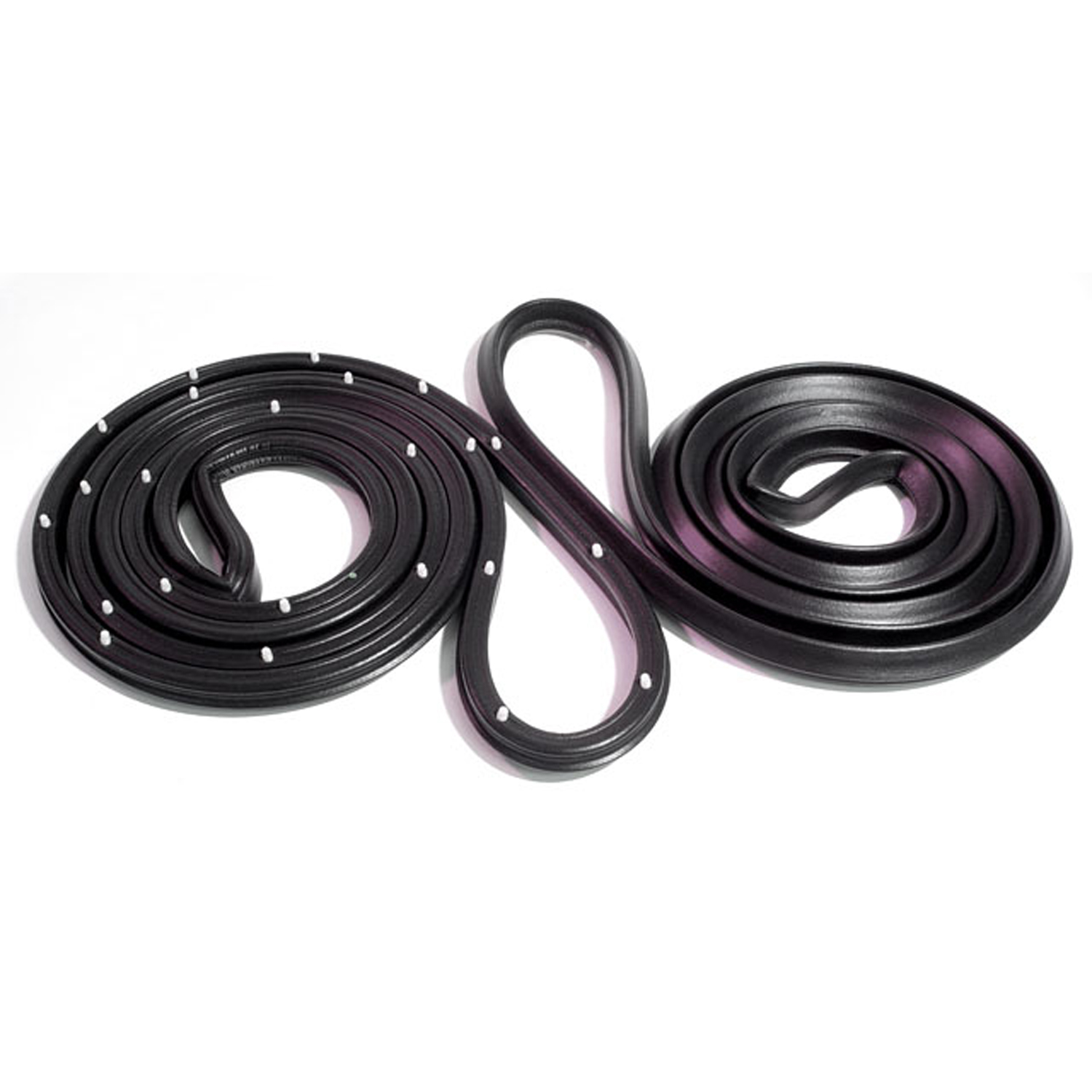 1975 Pontiac Astre Molded Door Seals with Clips-LM 13-AMolded Door Seals with Clips. For 2-door coupe and wagon (does not fit Monza). Replaces OEM #9883771/2. 147-1/2" long. Pair R&L
1975 Pontiac Astre Molded Door Seals with Clips-LM 13-AMolded Door Seals with Clips. For 2-door coupe and wagon (does not fit Monza). Replaces OEM #9883771/2. 147-1/2" long. Pair R&L 1975 Pontiac Astre Trunk Liner. Loose weave, jet black. 50" wide-M 30Trunk Liner. Loose weave, jet black. 50" wide. Sold by the foot
1975 Pontiac Astre Trunk Liner. Loose weave, jet black. 50" wide-M 30Trunk Liner. Loose weave, jet black. 50" wide. Sold by the foot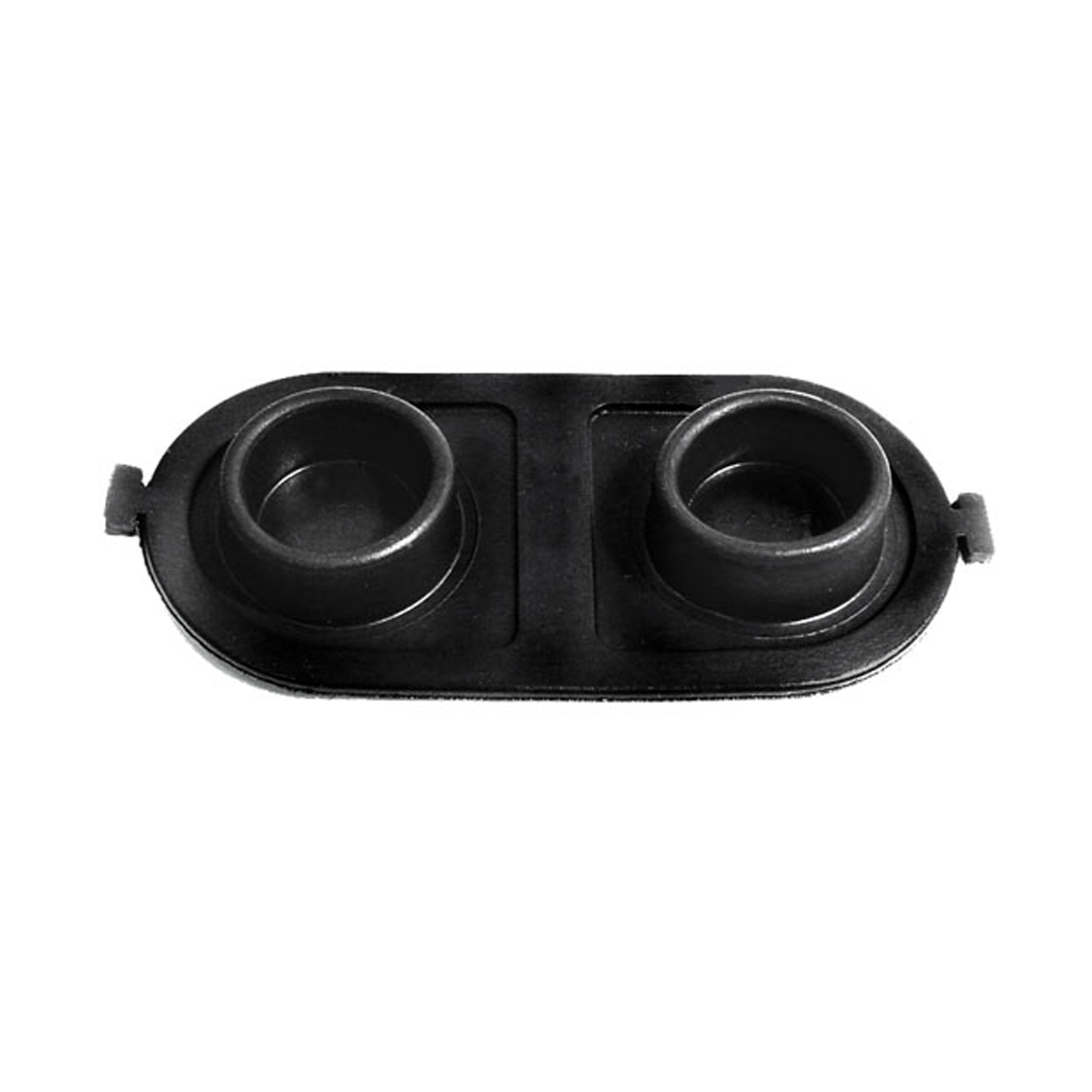 1975 Pontiac Astre Brake Master Cylinder Cover Seal. Replaces OEM #5470861-RP 2-EBrake Master Cylinder Cover Seal. Replaces OEM #5470861. 5" X 2-1/2". Each
1975 Pontiac Astre Brake Master Cylinder Cover Seal. Replaces OEM #5470861-RP 2-EBrake Master Cylinder Cover Seal. Replaces OEM #5470861. 5" X 2-1/2". Each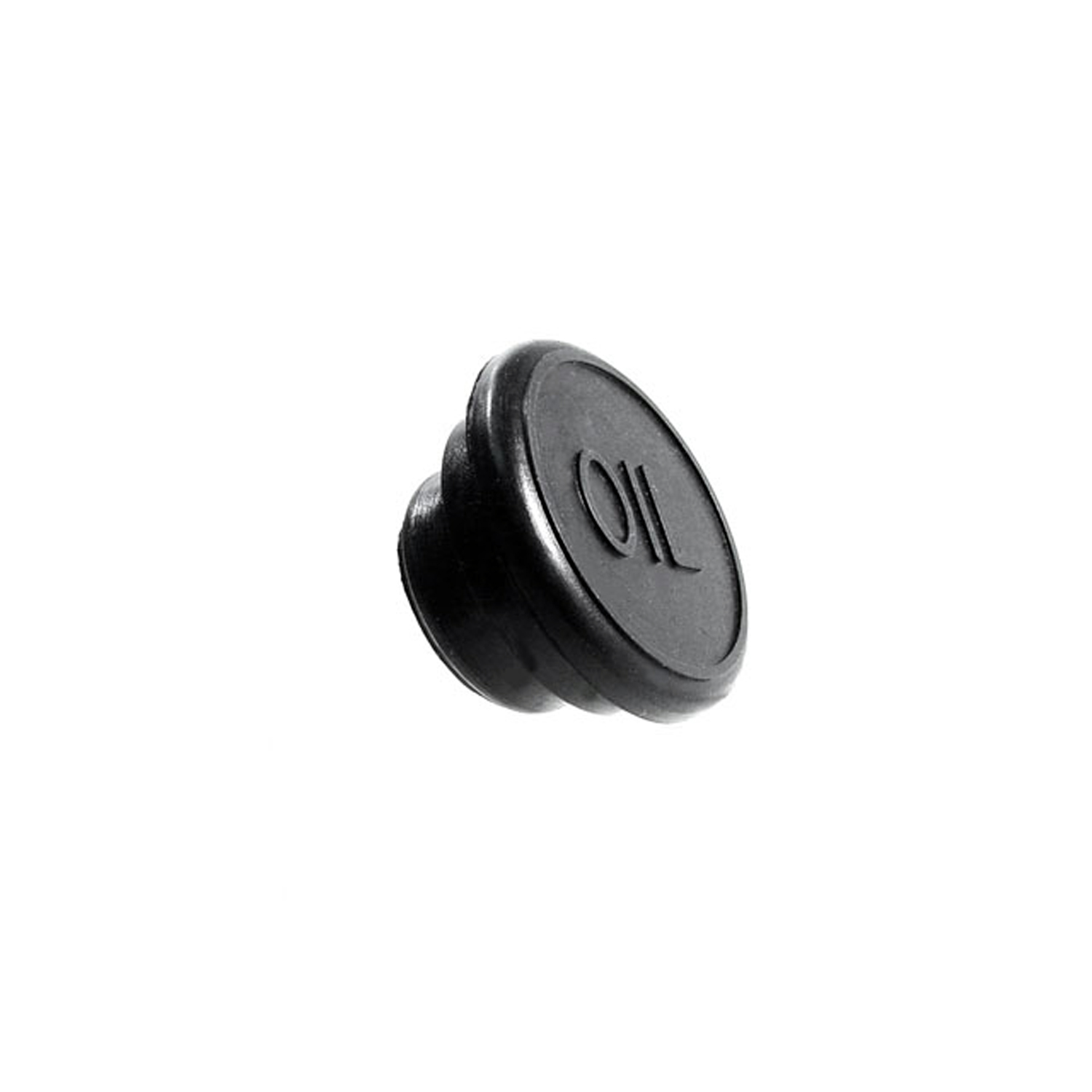 1975 Pontiac Astre Oil Filler Hole Cap. Made of rubber-RP 8Oil Filler Hole Cap. Made of rubber. Fits a 1-3/16" to 1-1/4" hole. Each
1975 Pontiac Astre Oil Filler Hole Cap. Made of rubber-RP 8Oil Filler Hole Cap. Made of rubber. Fits a 1-3/16" to 1-1/4" hole. Each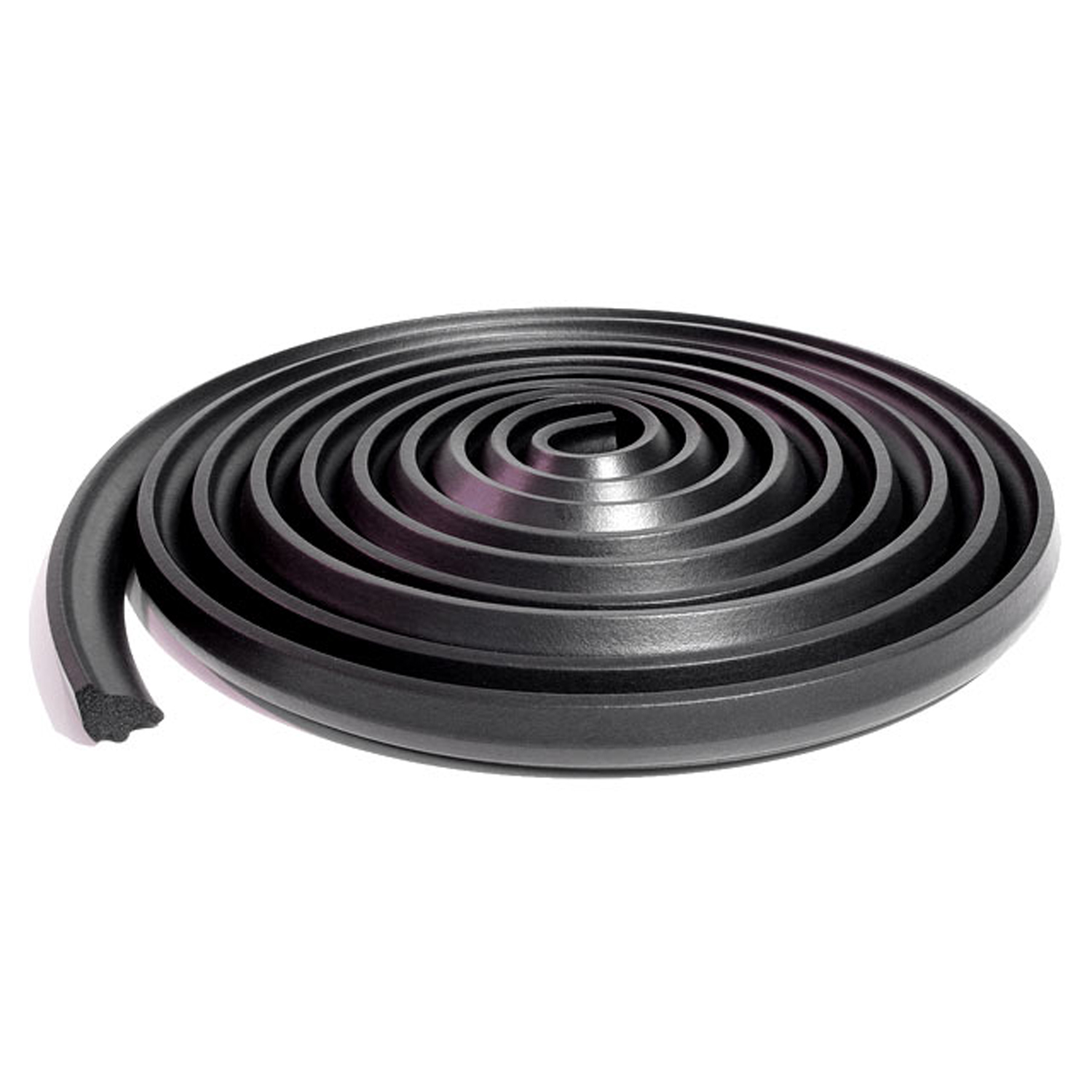 1975 Pontiac Astre Hatchback seal-TK 46-C/18Hatchback seal. Fits '71-'77 Chevy Vega, '75-'76 Chevy Cosworth Vega and '75-'77 Pontiac Astre. 18 ft. long. Each.
1975 Pontiac Astre Hatchback seal-TK 46-C/18Hatchback seal. Fits '71-'77 Chevy Vega, '75-'76 Chevy Cosworth Vega and '75-'77 Pontiac Astre. 18 ft. long. Each. 1975 Pontiac Astre Unbeaded Door and Trunk Lock Gasket. 1-3/16" O.D., 7/8" I.D-UM 1600-100Unbeaded Door and Trunk Lock Gasket. 1-3/16" O.D., 7/8" I.D. Each
1975 Pontiac Astre Unbeaded Door and Trunk Lock Gasket. 1-3/16" O.D., 7/8" I.D-UM 1600-100Unbeaded Door and Trunk Lock Gasket. 1-3/16" O.D., 7/8" I.D. Each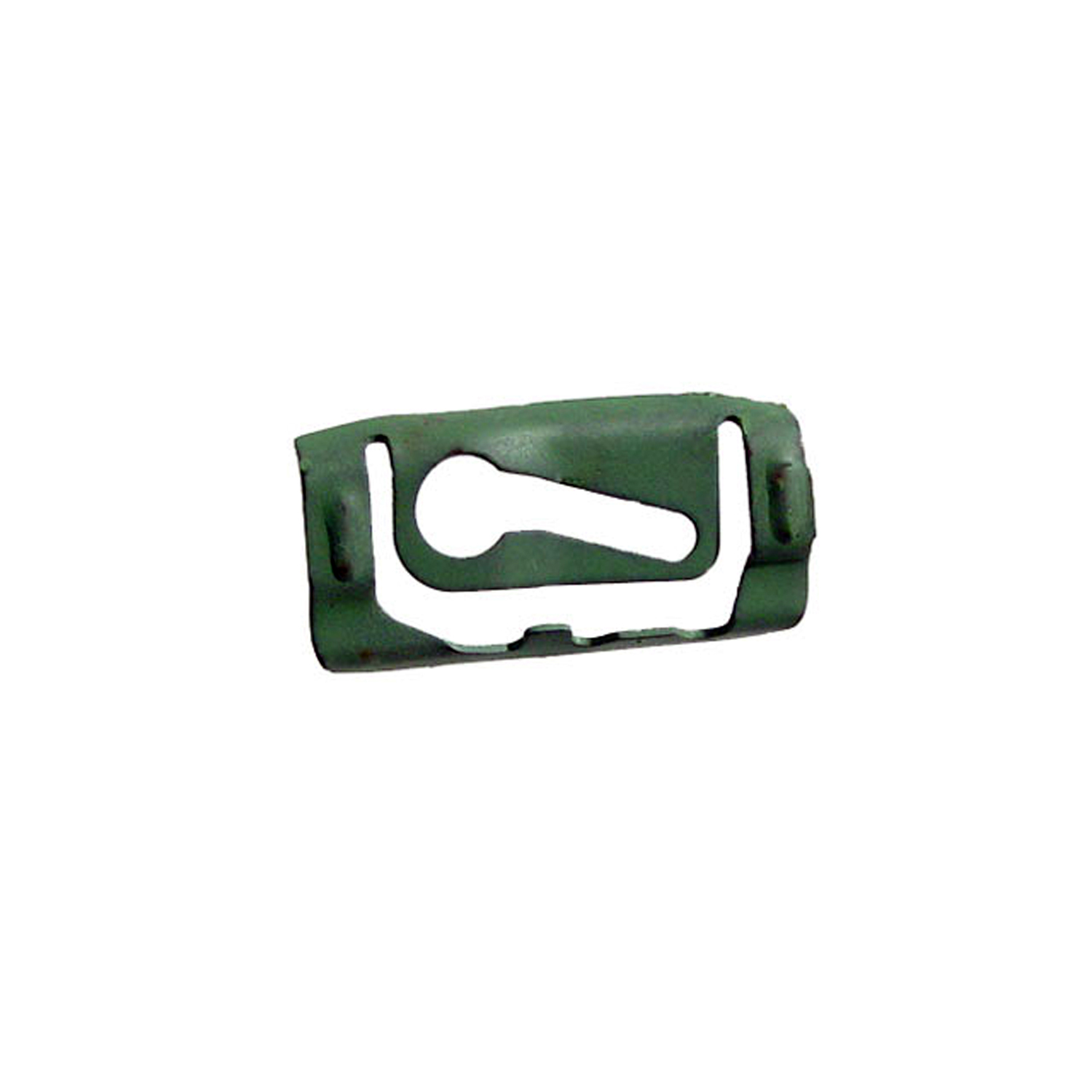 1975 Pontiac Astre Quarter Window Reveal Molding Clip. Made of Steel-WF 205Quarter Window Reveal Molding Clip. Made of Steel. 1-3/8" X 11/16". Each
1975 Pontiac Astre Quarter Window Reveal Molding Clip. Made of Steel-WF 205Quarter Window Reveal Molding Clip. Made of Steel. 1-3/8" X 11/16". Each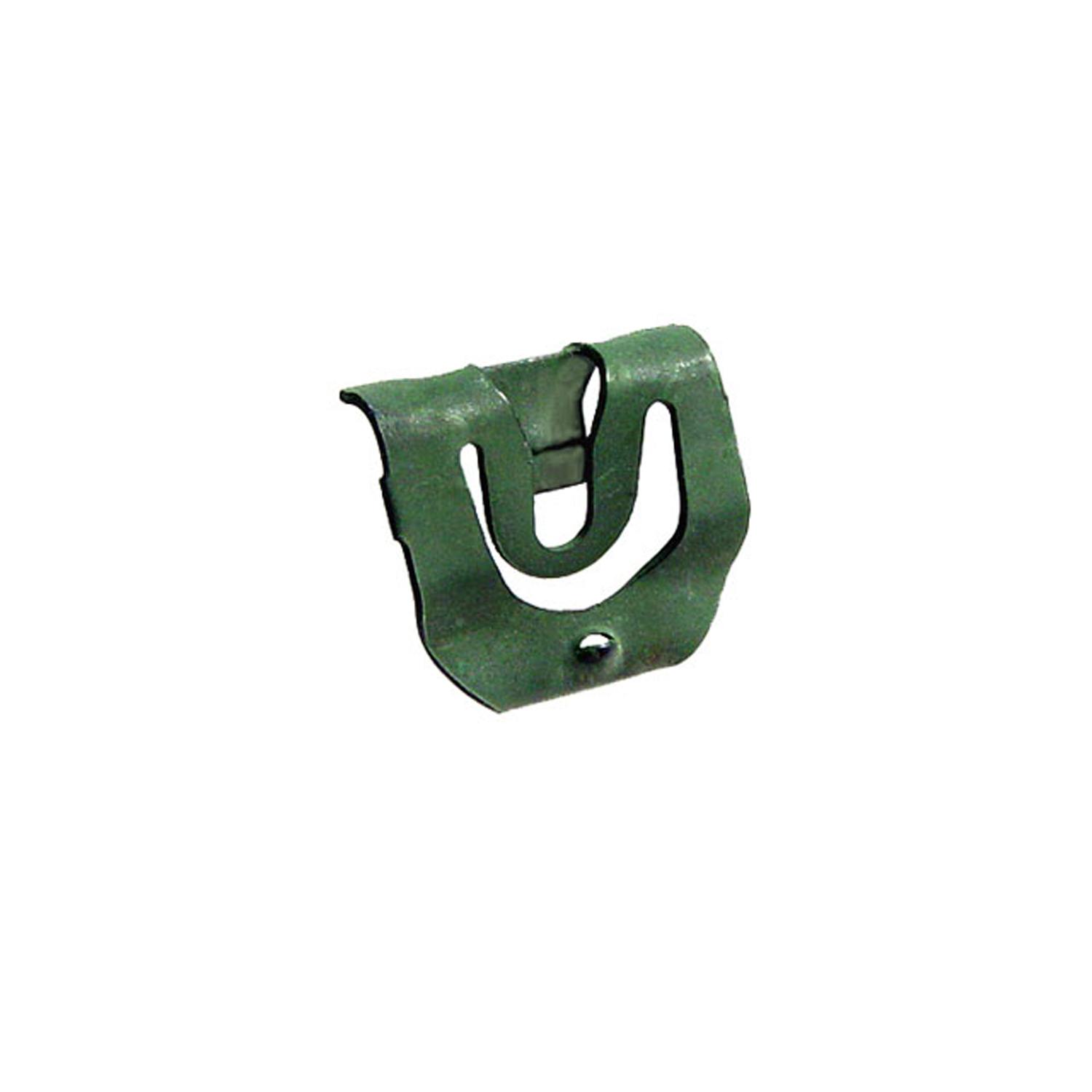 1975 Pontiac Astre Rear Window Reveal Molding Clip. For Station Wagons-WF 208Rear Window Reveal Molding Clip. For Station Wagons. Made of steel. 5/8" x 3/4". Each
1975 Pontiac Astre Rear Window Reveal Molding Clip. For Station Wagons-WF 208Rear Window Reveal Molding Clip. For Station Wagons. Made of steel. 5/8" x 3/4". Each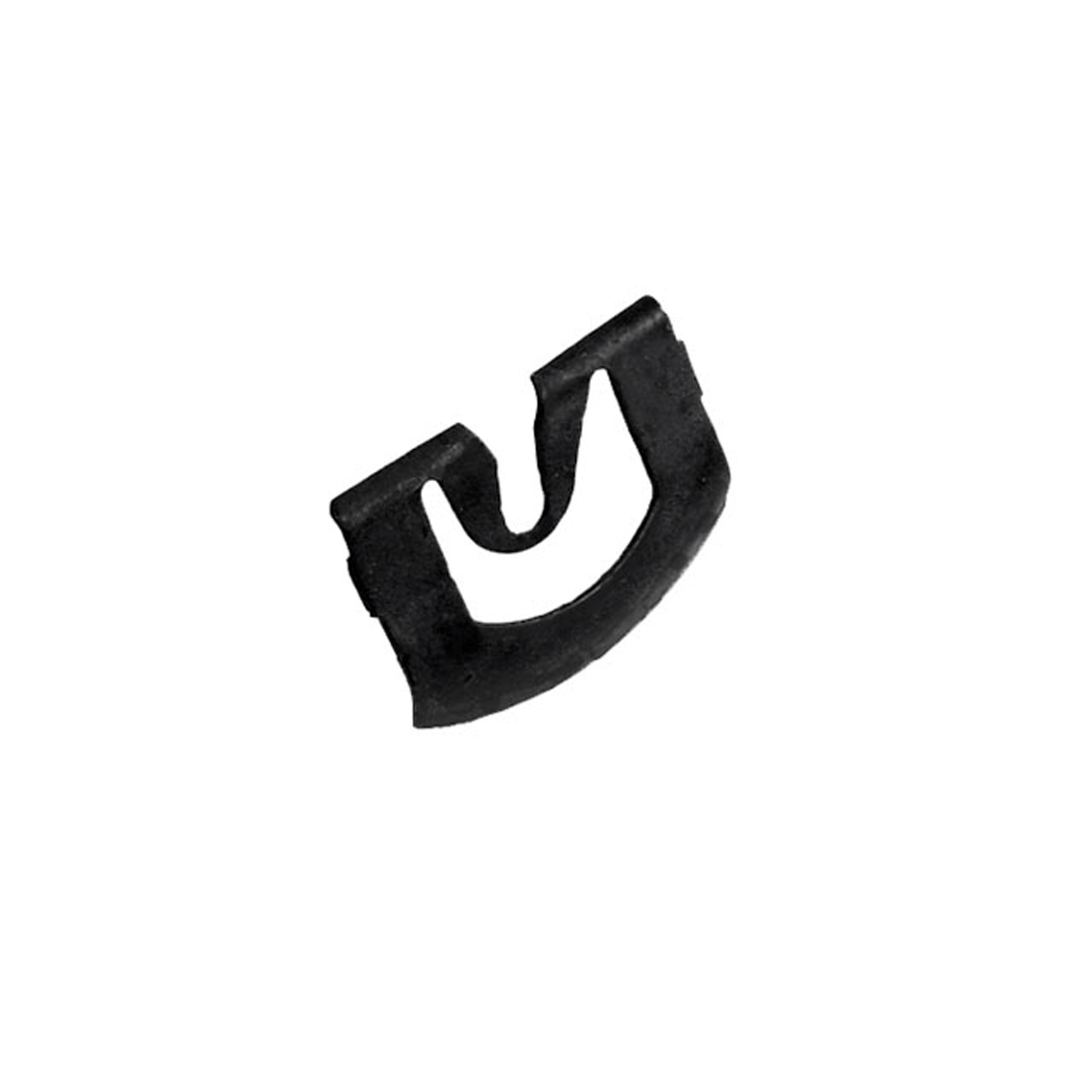 1975 Pontiac Astre Windshield Reveal Molding Clip. Made of steel. 13/16" x 1"-WF 209Windshield Reveal Molding Clip. Made of steel. 13/16" x 1". Each
1975 Pontiac Astre Windshield Reveal Molding Clip. Made of steel. 13/16" x 1"-WF 209Windshield Reveal Molding Clip. Made of steel. 13/16" x 1". Each 1975 Pontiac Astre Rear Windshield Reveal Molding Clip. Made of steel-WF 211Rear Windshield Reveal Molding Clip. Made of steel. 15/16" X 3/4". Each
1975 Pontiac Astre Rear Windshield Reveal Molding Clip. Made of steel-WF 211Rear Windshield Reveal Molding Clip. Made of steel. 15/16" X 3/4". Each 1975 Pontiac Astre Lower Side Window Reveal Molding Clip. Made of nylon-WF 214Lower Side Window Reveal Molding Clip. Made of nylon. 1-1/4" x 3/4". Each
1975 Pontiac Astre Lower Side Window Reveal Molding Clip. Made of nylon-WF 214Lower Side Window Reveal Molding Clip. Made of nylon. 1-1/4" x 3/4". Each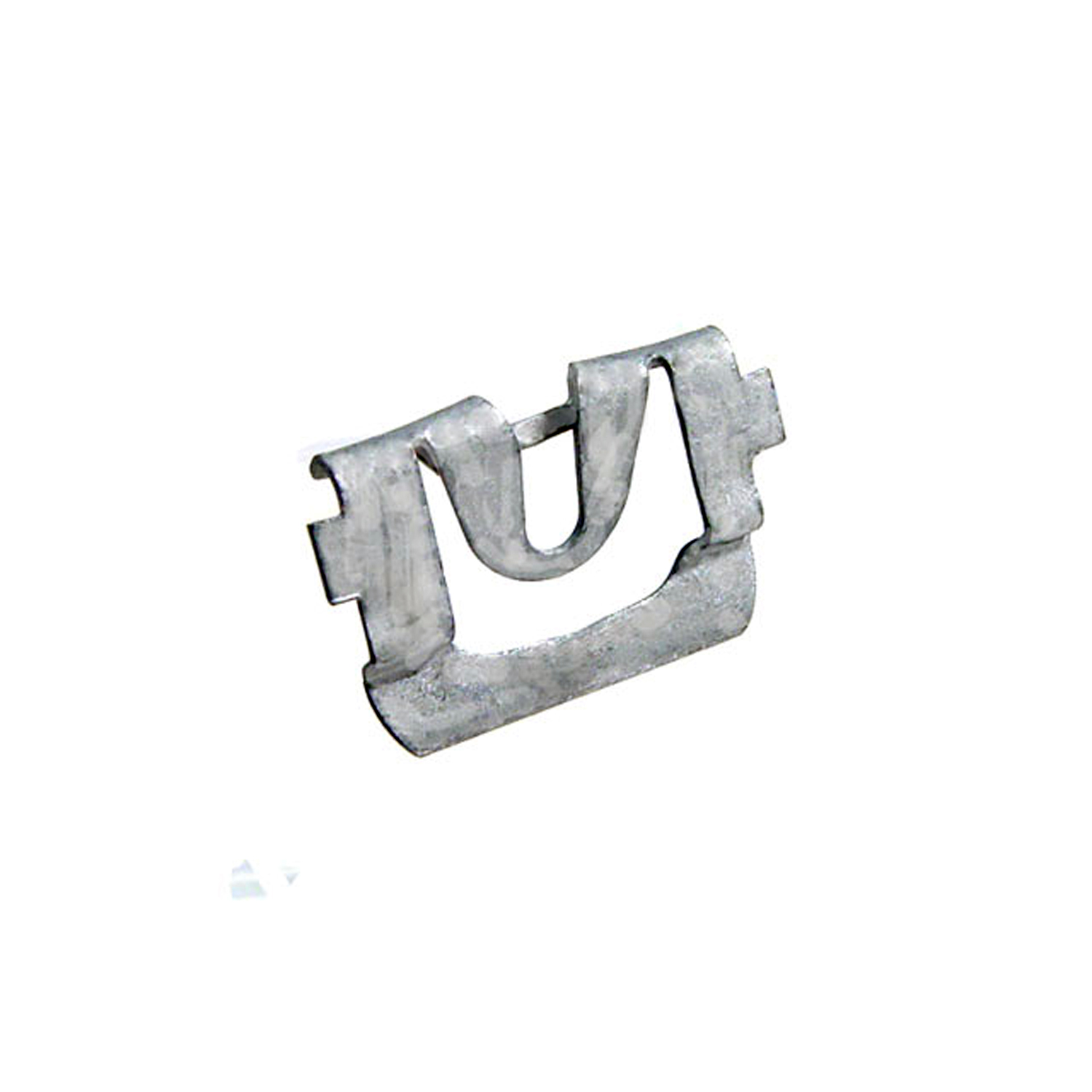 1975 Pontiac Astre Windshield Reveal Molding Clip. Made of steel-WF 223Windshield Reveal Molding Clip. Made of steel. 1/1/8" X 3/4". Each
1975 Pontiac Astre Windshield Reveal Molding Clip. Made of steel-WF 223Windshield Reveal Molding Clip. Made of steel. 1/1/8" X 3/4". Each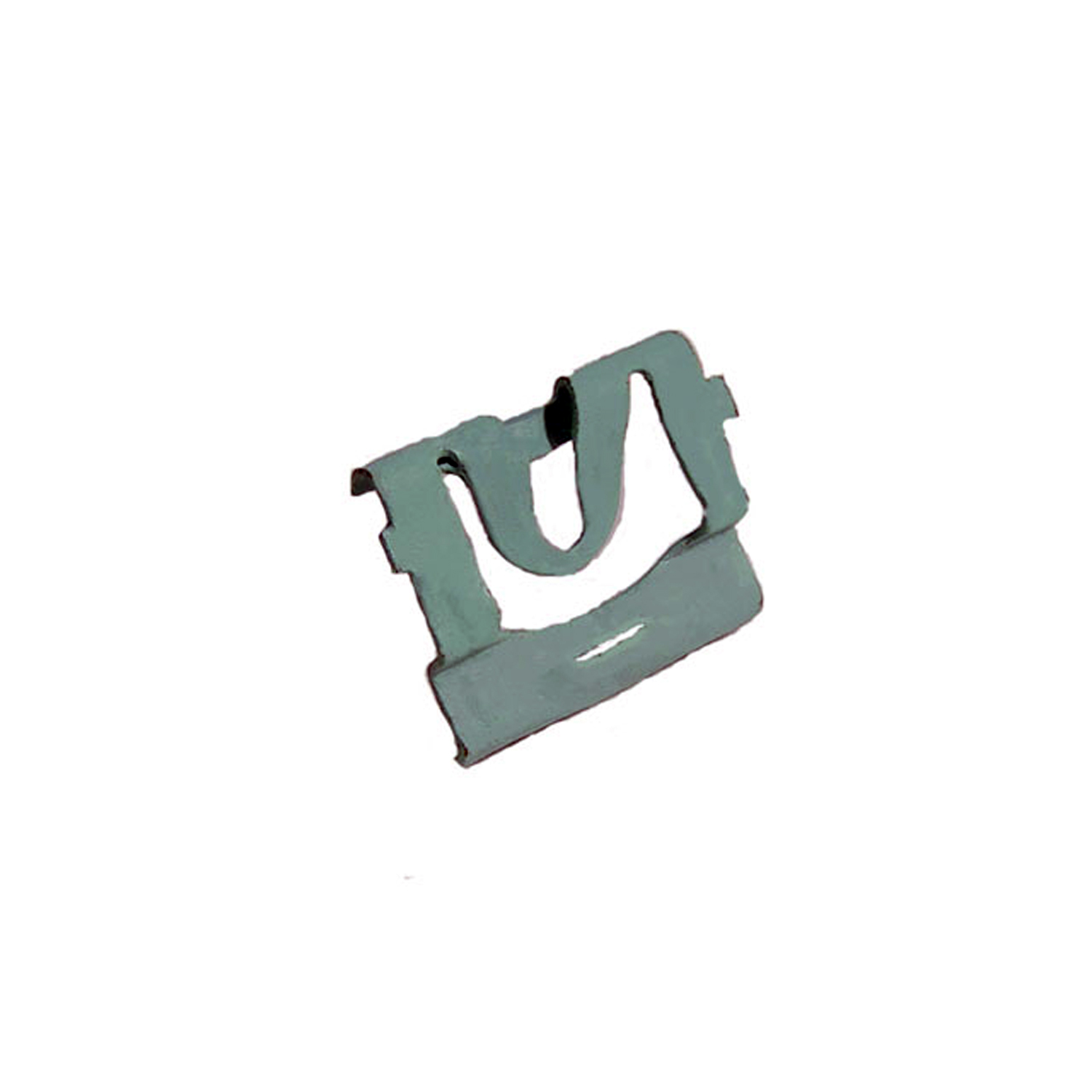 1975 Pontiac Astre Windshield Reveal Molding Clip. Made of steel-WF 224Windshield Reveal Molding Clip. Made of steel. 1-1/4" X 3/4". Fits many models. Each
1975 Pontiac Astre Windshield Reveal Molding Clip. Made of steel-WF 224Windshield Reveal Molding Clip. Made of steel. 1-1/4" X 3/4". Fits many models. EachWhy Choose Metro?
For over 100 years, Metro Moulded Parts has been the pinnacle of quality in classic car restoration parts. Our commitment to precision and authenticity in every component ensures a perfect fit and an OEM-level appearance.
- Expert Craftsmanship & Quality: Each part is a testament to our dedication to reliability and perfection, crafted from original designs and thoroughly tested.
- Advanced Technology: We use cutting-edge techniques to create flawless, long-lasting parts that surpass others in performance.
- SuperSoft Sponge – The Ultimate Door Seal: Not only are our door seals 30% softer than competitors', but they're also guaranteed to never leak. They effectively reduce wind and road noise, enhancing your classic car's comfort and driving experience.
- Proudly American: Our parts are a product of American craftsmanship, made in the USA with a spirit of excellence and heritage.
- Unrivaled Warranty: We back our products with a 30-year industry-leading warranty, a testament to our confidence in their quality.
Join us in preserving the legacy of classic cars with parts that are crafted for perfection, not just made.

